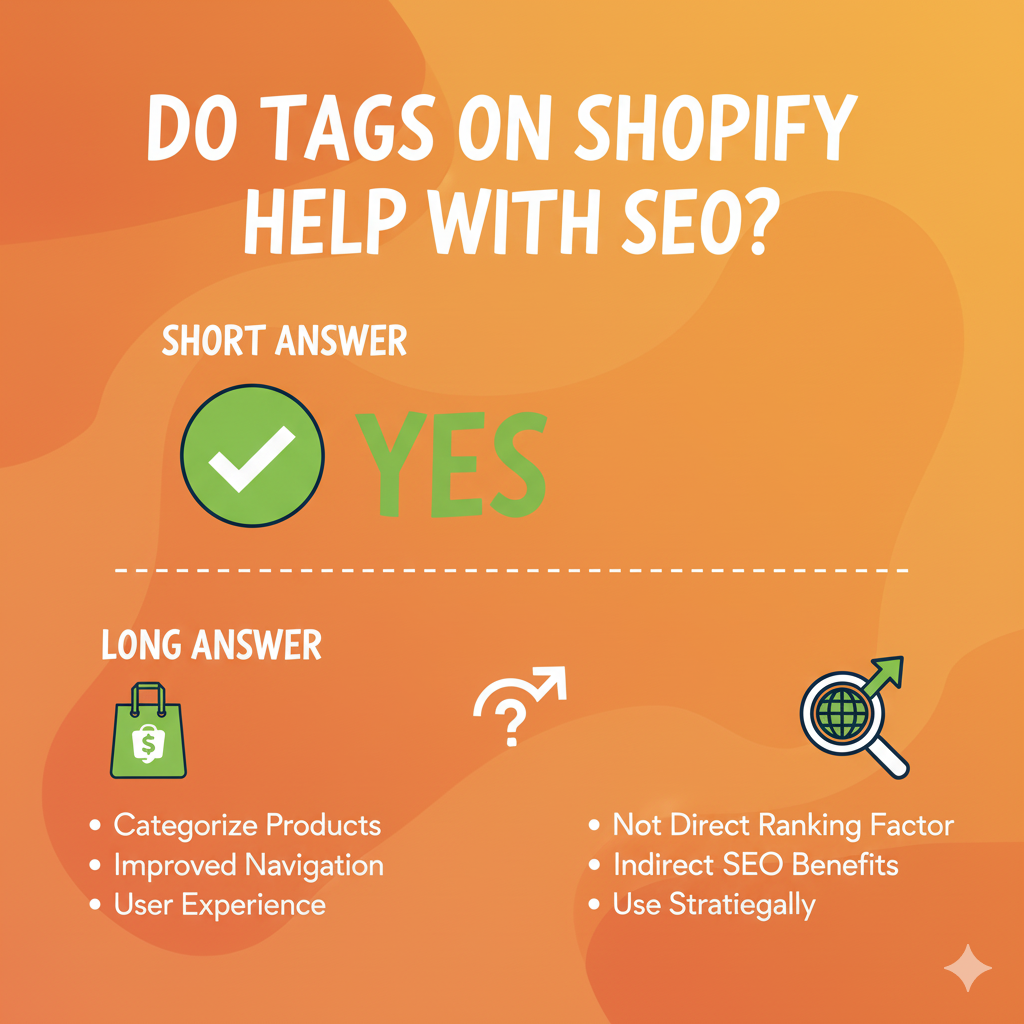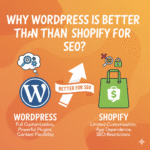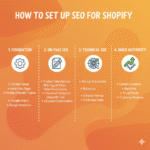When setting up your Shopify store, you’ve probably noticed the option to add tags to products, collections, and even blog posts. But here’s the big question: do tags on Shopify actually help with SEO?
If you’re trying to boost your store’s visibility on Google, it’s important to understand what Shopify tags really do and how (or if) they impact your SEO rankings. Let’s break it down in a simple, no-fluff way.
What Are Tags on Shopify?
Tags in Shopify are basically labels you can attach to your products, collections, or blog posts. They help you organize your store better.
For example:
- Product tags might include things like “summer-shirts,” “cotton,” “new-arrival.”
- Blog tags could be “style-tips,” “fashion-trends,” “sale-guide.”
These tags make it easier for you (and your customers) to filter and find content inside your store’s search or collections.
So yes — tags are great for organization and user experience. But when it comes to SEO, it’s a bit more complicated.
Do Shopify Tags Directly Improve SEO?
Not directly.
Shopify tags don’t have a major direct effect on your Google rankings. They don’t automatically boost your visibility or keyword rankings the way your titles, meta descriptions, or backlinks do.
However, tags can indirectly help SEO when used strategically. Here’s how.
How Tags Can Improve SEO in Shopify
1. Tags Improve Internal Linking and Navigation
When tags are used properly, Shopify automatically creates tag pages URLs that group products with the same tag.
Example:yourstore.com/collections/all/red-shoes
This page lists all items with the “red-shoes” tag, creating more internal links and thematic relevance for Google to crawl.
If you optimize these tag pages (with unique titles, meta descriptions, and relevant content), they can help Google understand your site structure and possibly rank for niche long-tail keywords.
2. Tags Improve User Experience
SEO isn’t just about keywords it’s also about how easy it is for visitors to find what they need.
Tags make your Shopify store easier to browse. Shoppers can filter products by color, size, style, or other features. This keeps users on your site longer, lowers bounce rates, and increases conversions — all of which are positive SEO signals to Google.
So while tags don’t boost SEO directly, they help create a better user journey, which search engines reward.
3. Tags Help With Content Discovery
If you run a Shopify blog, tags can help users explore related content. For example, someone reading your “Winter Fashion Trends” post can click a tag like “style tips” to see more similar posts.
This boosts internal engagement, which can lead to more indexed pages and higher authority in that topic area.
When Tags Can Hurt Your SEO
Yes, tags can also hurt your SEO if used the wrong way. Here’s how:
- Too many tags create duplicate content issues. Shopify automatically generates tag pages, and if multiple tags display similar products, Google might see them as duplicates.
- Thin tag pages (with little or no unique content) can waste crawl budget — meaning Google spends time crawling low-value pages instead of your key product pages.
- Messy tag structure can make it hard to manage and confuse both shoppers and search engines.
To avoid these issues, use tags sparingly and thoughtfully.
Best Practices for Using Tags on Shopify for SEO
- Use tags for organization, not keyword stuffing.
Keep tags simple, relevant, and meaningful. For example, use “leather-jacket” instead of “best-leather-jacket-for-men-sale.” - Limit the number of tags per product.
Stick to 5–10 focused tags max. Too many tags create unnecessary tag pages. - Avoid duplicate tags.
Don’t create similar tags like “t-shirt” and “t-shirts.” Keep your naming consistent. - Optimize tag pages (if you plan to keep them indexed).
Add custom meta titles, unique content, and headings to make those pages valuable. - Consider no-indexing low-value tag pages.
If your tag pages aren’t adding value, set them to “noindex” so search engines don’t waste time crawling them.
So, Do Shopify Tags Help With SEO?
In short: Shopify tags don’t directly boost your Google rankings, but they can support your SEO strategy indirectly by improving user experience, navigation, and internal linking.
Think of them as an organizational tool first and an SEO enhancer only when used carefully and strategically.
If you rely heavily on SEO for traffic, focus more on your titles, meta descriptions, site speed, and content quality that’s where the real SEO power lies.
Key Takeaways
- Shopify tags are mainly for store organization, not keyword ranking.
- They help improve navigation, internal linking, and user experience.
- Avoid overusing tags too many can cause duplicate content issues.
- Optimize or no-index tag pages based on their usefulness.
FAQs
Yes, tags on Shopify help with organization and navigation, but not directly with SEO rankings. They make it easier for you to manage your store and for customers to filter products or find related items.
For example, if you add tags like “cotton,” “summer,” or “best-seller”, Shopify can automatically group those products together. This improves the user experience which indirectly supports SEO but tags themselves don’t boost your rankings on Google.
Use tags to keep your store tidy and make shopping easier, not to chase keywords.
Not directly. Shopify tags don’t influence your site’s SEO rankings the way meta titles, descriptions, or backlinks do. However, they can affect your site structure and internal linking, which indirectly helps Google understand your content better.
If you use tags strategically, they can create useful category-style pages that help users and search engines navigate your site. But if you overuse tags or create too many similar ones, it can lead to duplicate content issues which hurts SEO.
So, tags affect SEO indirectly use them carefully and only where they add value.
Improving SEO on Shopify takes a few consistent steps. Here’s how to do it effectively:
Optimize your page titles and meta descriptions – Include your main keyword naturally.
Use clean, keyword-rich URLs – Short and descriptive URLs help both users and search engines.
Compress and rename your images – Add descriptive alt text (e.g., “red-leather-handbag”).
Add internal links – Link related products or blogs to build authority.
Write detailed product descriptions – Avoid generic content and add unique keywords.
Use an SEO app – Tools like Plug in SEO, Smart SEO, or Yoast for Shopify help you manage on-page elements.
Improve site speed – Use compressed images and remove unused apps to make your store faster.
Small improvements across these areas can lead to steady growth in search rankings over time.
If by “SEO tags” you mean meta titles and meta descriptions, here’s how you can add them easily:
Go to your Shopify dashboard.
Click Online Store → Preferences to edit your homepage SEO.
Add your Homepage Title (up to 60 characters).
Add your Homepage Meta Description (up to 160 characters).
To edit individual product or page SEO:
Open the Product, Collection, or Page you want to edit.
Scroll down to Search engine listing preview.
Click Edit website SEO.
Enter your Title tag, Meta description, and URL handle.
Click Save when done.
That’s it — Shopify automatically adds these SEO tags to your site’s code so Google can read and display them in search results.



Pingback: How to Add “Made to Order” on Shopify - Pratsify